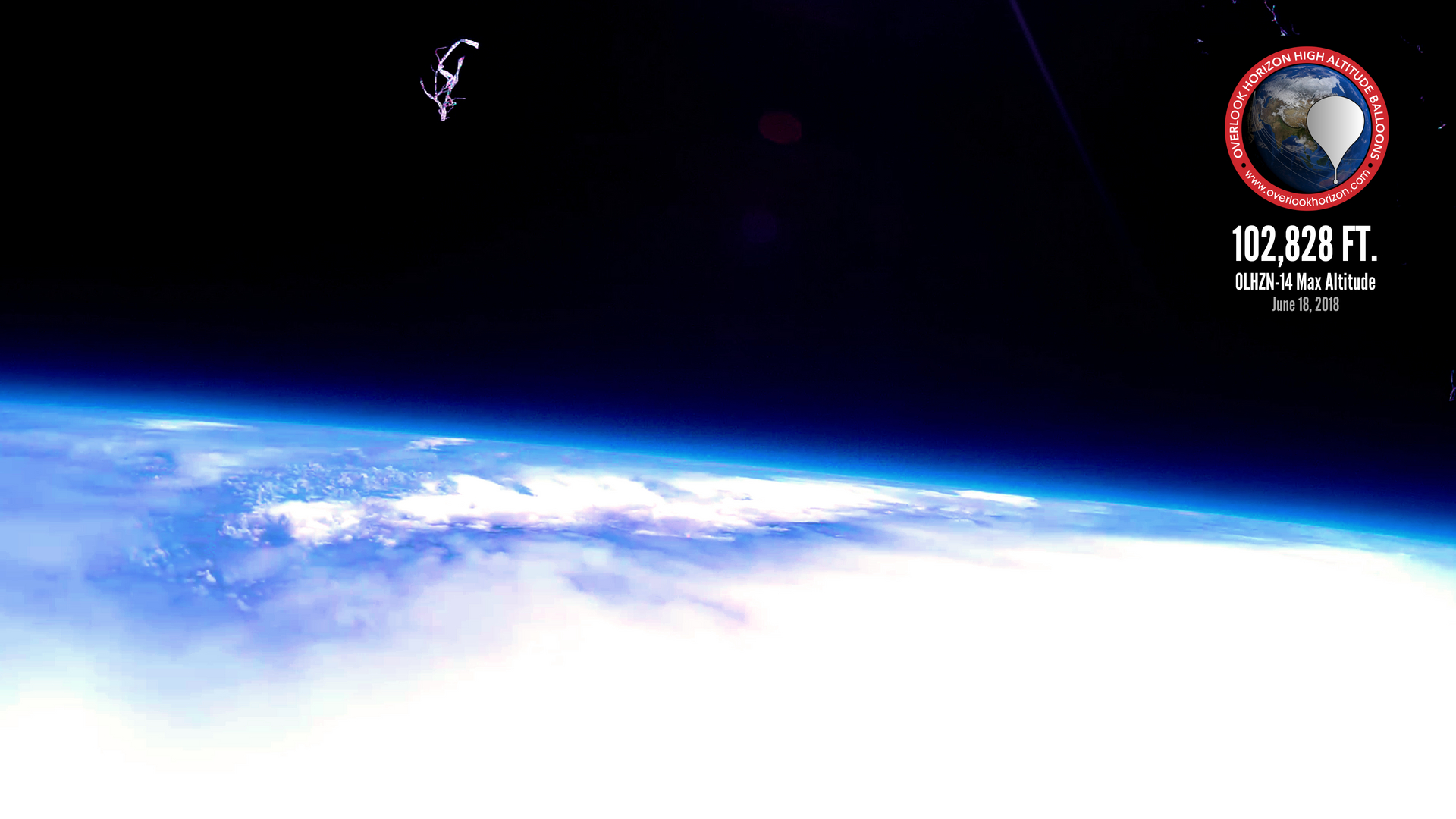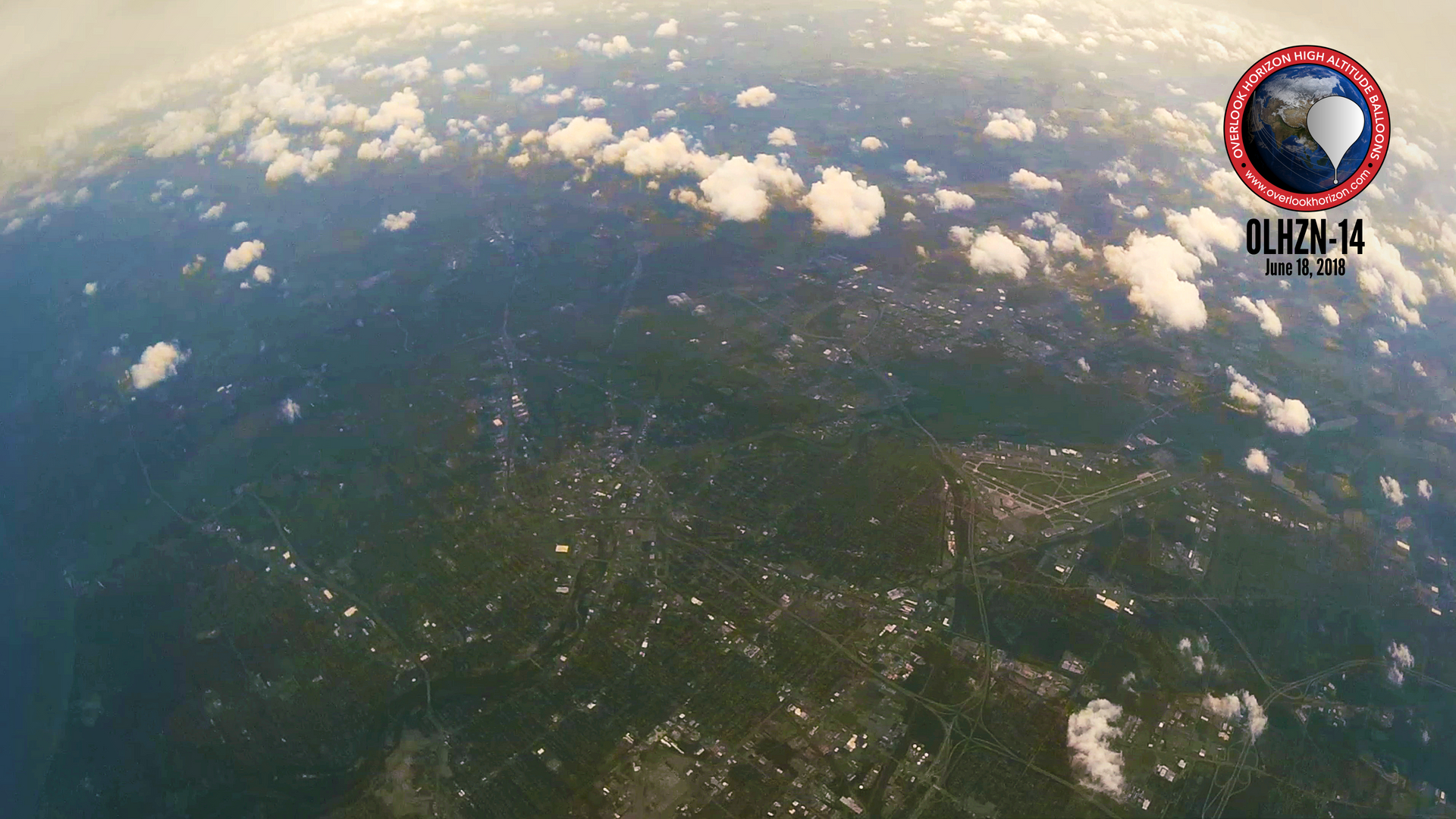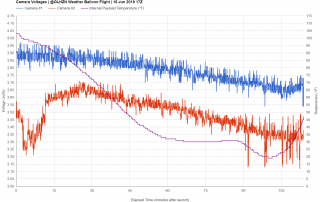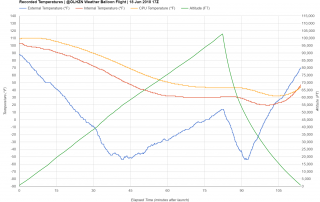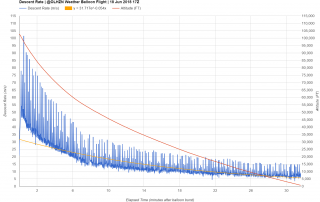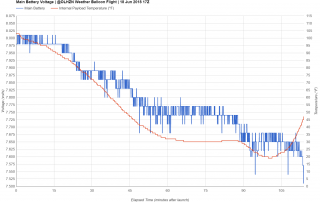OLHZN-14 was the fourteenth high altitude weather balloon flight for Overlook Horizon High Altitude Balloons. This flight launched on June 18, 2018 at 1:02:19pm EDT (17:02:19 UTC). The flight utilized two Lightdow LD4000 Cameras, our large tracking computer and our new rebuilt micro-payload to resolve damage incurred on the landing of OLHZN-12. This flight also featured a commercial payload customer from The Solarcan as well as some student BalloonSat experiments on-board from local schools. This also tested our new landing prediction software again, which was introduced on OLHZN-12.
Flight Day Story
OLHZN-14 was a very successful flight! The flight day started out in a new location near Brockport, NY. We chose this site in order to provide a better landing location for the flight based on the wind and weather predictions for this flight day. Our live broadcast struggled to maintain enough mobile bandwidth to keep the broadcast going without buffering, but operated well for the most part.
The launch itself proceed perfectly without any major issues. The launch itself occurred exactly at T0 on the countdown clock without the need for any holds. After launch, we measured a much higher ascent rate than targeted, but we knew this might happen. The targeted ascent rate was 5 m/s, however, the actual ascent rate we achieved was 6.30 m/s. The very windy conditions at the launch site (21 mph winds) made for a difficult inflation period. Generally, when this happens we do err on the site of over-inflation and we had actually planned for the possibility of this prior to flight day and ran alternative predictions with the higher ascent rates knowing that it might happen. Our landing zone was acceptable for both the targeted and the actual ascent rates.
The flight was originally expected to reach about 95,000 FT in altitude using its 1000g balloon. With the faster ascent rate, this usually leads to a lower maximum altitude as the extra helium in the balloon will cause the balloon to burst sooner. We expected to fall short of the 95,000 FT. target and possibly even burst below 90,000 FT. For this flight, however, we achieved a surprisingly high altitude of 102,88 FT. !! This incredible altitude is higher than OLHZN-13 reached which used a larger 1200g balloon and a slower ascent rate!
After balloon burst, our landing prediction software kicked in exactly as planned and operated extremely well. The first prediction made while the payload was still around 100,000 FT. in altitude was only 1.13 miles (1.82 km) from the actual landing site and the predictions were all under 1 mile from the actual landing site with more than 20 minutes remaining before landing which is phenomenal!
Upon reaching the landing site, we attempted a quick search for just a minute or two when a thunderstorm arrived within nearby lightning strikes. Out of an abundance of caution we decided to seek shelter in our chase vehicles until the threat of lightning had passed which lasted about 90 minutes. Once the threat of lightning had passed, we ventured out further into the cornfield to discover the payload casually resting in the open field for a nice and easy recovery! The payload experienced a harder lading than usual with a landing speed of about 8 m/s instead of the expected 7.5 m/s speed we expected. This hard landing dislodged both the main flight computer and the micro computer which meant that positioning reports from both devices ceased operations immediately upon landing. This wasn’t a huge issue, but it did contribute to some delay in the recovery since we did not know the precise touchdown location until we actually saw it. With lightning nearby, we were hesitant to go searching for the payload without a precise known landing spot. One of the cameras was dislodged, but undamaged, and the payload also took on some water on the interior from the passing thunderstorm. Upon initial testing, it does not appear that the water has damaged any of the on-board systems. The Solarcan and all on-board student experiments survived without any apparent issues, although the Solarcan suffered minor cosmetic damages (dents) from the hard landing. The captured image from the Solarcan will be sent back to Solarcan and they’ll share the findings on their Twitter and Instagram accounts. At the end of the day, this was an incredibly successful flight for us!!

